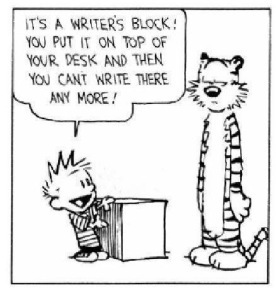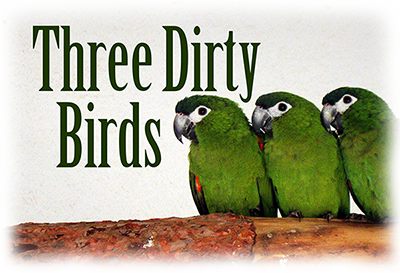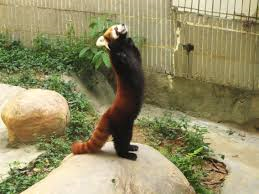Kate Lowell's Blog, page 31
July 17, 2014
Conversations With My Editor
This occurred during a conversation where I was apologizing again, because Bite Me is still growing.
Editor: I’m gonna end up with another 96k book to match hers (another of her authors), aren’t I? I always forget you have ones that age!
Me: Yes, yes you are. Sorry. #notsorry Once we have the whole thing to look at, we can see if there’s any pruning.
Editor: Meh. If it needs to be 96k, it needs to be 96k.
Me: Thank you for saying that. I really do get hung up on length. *coughs*
Editor: HAH! Hey, so long as the length is put to good use & isn’t limp, I’m all for it.
Filed under: Conversations With My Editor Tagged: writing life








July 16, 2014
Three Dirty Birds Talk: Story Trumps Structure and Making Promises
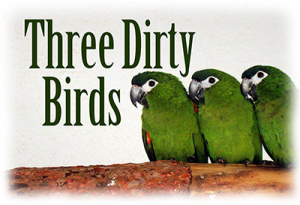
We’re perched at Zoe’s blog today, talking about making promises to readers and making sure you keep them.
I really liked this chapter–this one chapter alone made the book worth the price.
Filed under: Three Dirty Birds Talk Tagged: writing advice








July 15, 2014
Tuesday Tickle: Bite Me
I sent this to the Editor in Question the other day, as we were batting around ideas for lightening the mood in the second part of Bite Me. We’re heading for 90K now. *shakes head*
Glyn licked the last of the grease off his fingers and wondered when the hell KFC had become an option for supper. For that matter, eating on the couch, with his head in Levi’s lap, instead of at the perfectly good dining table he owned. He tipped his head back to look up at Levi, happily devouring another deep-fried heart attack disguised as chicken.
It was tasty, though. Still, he needed to do something to derail this descent into trailer park living. “Where’s the laptop?”
Levi swallowed, and said, “Kitchen, I think.”
Glyn thought about it for a moment, but he was far too comfortable here. “What about my phone?”
“Side table. You want it?”
“I’ll get it. Your hands are greasy.”
“And yours aren’t?”
“But they’re my hands.” Shamelessly, he crawled across Levi’s lap, hanging over the arm of the couch to poke at the phone. Out of habit, and because it was fun and he was part witch, he pressed himself against Levi’s thigh harder than was truly necessary.
Levi tossed a stripped bone into the box on the coffee table and grabbed Glyn’s ass with both hands. “Don’t mind if I do.”
Glyn jumped. “Fido, I hope you wiped your hands before you did that. That’s virgin wool.” Glyn craned his neck in an attempt to assess the damage.
“Not anymore.” Levi cocked his head to one side, very much in the manner of his wolf, and eyed Glyn’s ass speculatively. “I suppose I could lick it off.” He squeezed the muscle and grinned.
“Be my guest,” Glyn said as he turned back to the phone. The Times had a section on what was playing at the theatre. It had been a while since he’d gone anywhere except work and home. “Ouch, Fido. Fewer teeth please. I have to sit on that later.”
Still a few tweaks to tweak, but very much the fun side of Glyn. :D
Filed under: Bite Me, Bite Me Later, Tuesday Tickle Tagged: mm romance, werewolves, witches








July 14, 2014
#mywritingprocess Blog Tour

Heloise West tagged me in this, so here goes:
1) What am I working on?
Right now, I’m working on developmental edits/revisions for Bite Me and for A Knight in Shining Kevlar. The werewolf story is going much better than the cop. Plus finishing the first draft of the sequel to Nuts About You, and working on the Christmas angel story.
2) How does my work differ from others of its genre?
Honestly, after the conversation I had earlier with the other Dirty Birds, I’m not sure, though it certainly is. I think tend to throw a lot of dark humour into things, probably due to my early obsession with Monty Python and other British comedy troupes. I do like funnies–part of my background is Irish/Scottish, who tend to be a humorous group overall.
3) Why do I write what I do?
I like the challenge. Romance is very under-rated, because people assume that if a genre has a specific structure that must be stayed within, then the rest of it just writes itself. But, producing something unique and compelling within that specific structure is a huge challenge. Sure, it’s easy to write according to the structure. But doing it so it doesn’t feel like every other romance book out there–that’s the trick. I don’t know that I always hit the mark, but I do make every effort to.
4) How does my writing process work?
I usually start with an image, or a bit of dialogue. Sometimes it’s a question, or my editor poking some weird idea at me (she knows that I like a challenge). From there, the question, “Where would this go?” is the next step. Generally, once I have the characters well enough fleshed out in my head that I get one of these catalyzing scenes, I also know enough to see the grand outlines of the conflict, and how it will be resolved.
At this point, I’ll open a new binder in Liquid Story Binder, start a planner for the story itself, and another for taking notes in. I’ll create a couple of chapters and write the parts I have worked out in my head. As I write those, I’ll recognize other pieces of the story that have to be told, so I’ll create chapter files for them as well, with notes about the goal of the chapter.
I jump around in the project as I figure out parts, come up with conflict and resolution, find and patch weaknesses in the story. Things generally slow down in the middle, where I’ve created promises in one part and have to figure out how to fulfill them, or have fulfilled others, but have to figure out how to make them.
Eventually, the whole thing is done, and then it’s several passes to go through and fill gaps, add foreshadowing, add details for richness or distraction. If I’m planning a follow-up, this is where I add references to things that create the threads linking this story to the next one. It’s goes through my critique group, after which I make another set of passes through it. Then it goes to beta, to see if I’ve actually fixed the issues brought up in group or just muddied the waters. Then I make another couple of passes through it, and send it away, with all fingers and toes crossed.
And after that, the cycle starts over again with another project.
Check out Jena Wade’s contribution to the tour!
Filed under: Uncategorized, writing Tagged: workflow








Three Dirty Birds Talk Story Trumps Structure: Twists
Three Dirty Birds are flying through this book–now we’re at Chapter 10: Twists.
Kate: Bored. Zzzzzzzz. Why did I get the boring chapter?
Ana: Because you’re a lady. You can’t take the more exciting parts.
Kate: Then I’ll just have to fix that, won’t I?
Ana: Is this going to be a plot twist?
Kate: If I told you that, it wouldn’t be much of a twist, would it?
Ana: But you could still make it a promise.
Zoe: We’ll just have to wait and see if Kate turns Ana on her head. I agree that it was kind of a snoozy chapter, but there was one bit that had me thinking even as I went on to read the other two chapters for this week. It was where he said to create a parallel story to the one you’re telling on the surface, so that readers think the story is one thing, but it’s actually this other thing, which you reveal…in the twist.
Kate: That was really the only point in the chapter where he had my attention. But it seems fairly obvious, too. You want to have the obvious implications, but hide clues to the real explanation inside the obvious stuff. I like to hide clues in lists of things, like when I describe a room. I’ll list a bunch of things the character notices, some of which are scenery, but at least one of which has significance with respect to the story.
Zoe: George R. R. Martin is the master of burying a teeny tiny important detail in a mountain of gastronomy.
Ana: I never find those because I skip his too lengthy descriptions. And I figured that everything that matters will be repeated.
Zoe: I just go on the /asoiaf subreddit and see what I missed.
Kate: But the descriptions are long for that reason–you have to be aware while you’re reading his stories, because the clues are anywhere. It’s a bit of a game to me, trying to pick out what’s probably going to have significance later in the book. If I win, I get a prize.
Zoe: The parallel story thing wasn’t obvious to me. My first reaction when I read that was, “Geez—isn’t it enough work coming up with one story?” Which is why it ran around in the back of my head while I read the other chapters…and by the time I was done, I realized I had actually already been doing that with the novel I’m working on. So it was obvious, but not consciously obvious…if that makes sense?
Ana: I think that goes for a lot of his advice. And writing advice in general, I guess. I often read something that’s new to me, but then realize I’d already been doing it that way.
Kate: I guess this is one of the few things that I was doing consciously. By the time I have my first draft done, the vast majority of the story is there. Then it’s passes for choosing wording that can be interpreted several ways, setting up any Easter Eggs, and dropping in clues that I intend for people to miss on the first read. It’s like an upside Hierarchy of Human Needs–the main story is the largest part and rests on the surface. But, as you drill down farther, the clues become smaller and more hidden, except that once you see them, it’s obvious. (That’s not to say I do a great job of it all the time, but it’s something I try for.)
Ana: I guess the reason I wind up with a lot of rewrites is that I often don’t find my ‘story behind the story’ or second story until I’m done with the first draft, and then I have a whole lot of things to add in the background. In the books I read I really like plot twists that, as he describes it, give new meaning to everything that precedes them. I think those are the books that, when you read them twice, they’re different the second time around.
Kate: I think this might be why I’m so slow a writer, though. You guys leave me in the dust with your wordcounts.
Zoe: I figure out the stories during the planning phase, so they’re there in the first draft. Usually my subsequent drafts are fixing character actions to make them more consistent with the character. I do like how he expressed the twist thing as parallel stories—I think that can help avoid the twists that come out of nowhere, if you’re thinking of it as a secret story that runs along with the surface story.
Kate: I think that comes down to a certain amount of ambiguity in how things can be interpreted. If you’re running a parallel story structure, you have to make sure that there are two or more possible interpretations for a choice, an action, or an observation. The obvious one, and the real one that makes sense once you adjust how you look at the story. Like those “Is it a vase or two faces?” pictures.
Zoe: And misdirecting readers comes back to the questions he told us to ask in Chapter Eight: What are readers expecting right now? What are they hoping for?
Ana: Yup, it’s all about reader expectation and manipulating it.
Zoe: I sometimes find I get in my own way, with wanting to get to what I’m hoping for—you know, the guys getting together or whatever. I have to watch myself with that. I’ve ruined a lot of story endings with jumping to that too quickly/easily/unbelievably.
Ana: That’s not a problem I have because sex scenes are hard and I’m lazy.
Kate: Lol. That’s what revisions are for. And The Editor In Question.
Zoe: Yeah, Games Boys Play had 20,000 words added to the ending in the second draft. (The readers who have issue with the published ending should get a look at the original. It would have brought angry mobs with pitchforks and torches to my front door.)
Kate: I like that on page 142, he basically consolidated the entire chapter onto two pages. I’ve stickied that, so I don’t have to comb through the rest of it, because I did find it kind of repetitive.
Zoe: That was two solid pages of questions…so I skimmed it. I should sticky note it so I can go back and actually read them at some point. (I did write “What are readers expecting? What are they hoping for?” on a sticky note and put it on my monitor. Next to last week’s note that said pretty much the same thing. But they’re good questions to ask!) (Ana: Which you’re never going to look at again.) (Right.)
Kate: I’ve got a few notecards up on my corkboard now, with some of his questions on it. Mostly the ones that will help keep me on track a little more.
Zoe: (The difference being that Kate will probably look at her notecards.)
Kate: They’re right above my monitor, which is where I always look when I’m trying to avoid writing.
Ana: I still look at my monitor when I’m trying to avoid writing. Just not at Scrivener.
Zoe: Me too. Or I go over to the couch and take a nap. I’m a big fan of naps.
Ana: I often plot in my head while lying on my bed. Sometimes I fall asleep. (Often.)
Zoe: My ability to plot while I “nap” is directly proportional to how far away something to jot notes down on is. The farther away, the better my ideas.
Kate: My best ideas come when I’m driving, because of course there’s no way to write anything down. And it’s usually on my way ‘into’ town, so by the time I get home–zip.
Zoe: On those kinds of drives, I wind up repeating key lines of dialogue in my head over and over till I get home. (At which point Mr. Rider wants to talk, and boom—gone from my head.) I tried using a voice recorder, but it’s just awkward. On long drives (I love road trips), I can plot out entire novels, and since it doesn’t rely on bits of dialogue, I can usually keep that intact in my head for a while (months even) before I write it down. But dialogue…ugh…get it down or lose it forever.
Kate: My stories always start with a piece of dialogue and one image, and then they grow from there.
Ana: For me it usually starts with specific characters I want to write about. Don’t ask me where they come from, they just wander into my head and refuse to move out as if they paid rent.
Zoe: A piece of dialogue will get my butt in the chair writing, but the story idea can start from anything. It’s frustrating when that happens on the road.
I’m thinking readers didn’t expect naps and road trips, so we’ve successfully twisted this discussion.
Ana: Yay. I’m still confused about Kate’s lady-status though.
Zoe: Maybe that’ll be resolved in the next chapter.
Kate: You’ll have to wait and see…
Tune in on Wednesday, when we talk about Promises You Make To Your Reader.
Filed under: Three Dirty Birds Talk, writing Tagged: writing advice








July 13, 2014
My Kinda Writer’s Block
Bet we could all use one like this every once in a while.
Filed under: Random Weirdness, writing Tagged: writer's block








July 11, 2014
Three Dirty Birds Talk Story Trumps Structure: The Judgy McJudgy-pants chapter
We’re hanging out (and drinking) with Ana today!
Filed under: Three Dirty Birds Talk, writing Tagged: writing advice








July 10, 2014
What Assembling My Daughter’s New Dresser Taught Me About Writing
As I work on the worldbuilding in a linked series of fantasy stories, my mind keeps drifting back to the day I tried to put my daughter’s new dresser together. It was a lovely dresser. Sturdily built, with real wood. Wicker drawers, for interest and texture. Warm colors. It was well packaged, came from a store I trusted not to sell me junk.
But when I got into putting it together, it was whole different story.
The body of the dresser is made up of a series of boards connected into a framework. All the pieces are labeled, and the usual “connect par A to part B’ instructions were there.
Here’s where everything fell apart.
The first thing that happened was the names. All the names. Everything got named, and not only did they all get named in the same step, but none of the names meant anything to me. ‘Upper Back Frame’–what the heck is that? Apparently, it’s what you have after you’ve found the appropriate pieces and put them together in the proper order and orientation.
Since there was no obvious front or back on the pieces, and the instructions just said to put them together, there was a lot of putting things together and then taking them apart again so I could turn them around. It easily doubled the amount of work necessary to put the frame together.
Every line in the instructions had at least three names that I hadn’t seen before. By the time I’d gotten to the end of the line, I’d forgotten what was at the beginning. I read those instructions over and over again, and spent more time puzzling over what they meant, and trying to keep the unfamiliar terms in my head long enough to look away and connect them to the physical hardware I was dealing with.
There were pictures, though. This is the one that purported to help me see where to put all the pieces of the frame.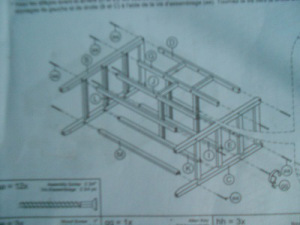
*If you click on it, it will get larger. Not that it will help. That had to be one of the most confusing diagrams I’ve ever seen. Compared to some Ikea stuff I’ve put together, where there isn’t even a need for words…*headdesk*
By about halfway through, this is the state I was in: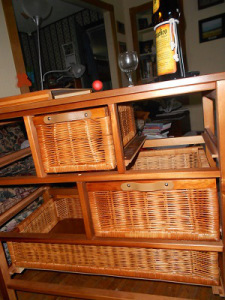
*Note the bottle of Frangelico on the dresser. And the bottom drawer is in backwards, because at first I couldn’t figure out which side was which, and then was too cranky to take it out. Not because of the Frangelico.
I did eventually make my way through it. I left it alone overnight, and finished it the next day, when I was less grumpy. It’s together and full of most of the teenager’s clothes. (The rest are scattered over the floor in several rooms of the house, until I threaten to put them all in a garbage bag.)
What this brought home to me is how careful we have to be in our pacing when we’re establishing the setting of a story. Not just for fantasy, science fiction and such, but even for contemporary. Because pacing isn’t just about how fast you move the story along, but how quickly you filter the information the reader needs into the story.
Overload the reader with terms, or description, and even if they desperately want to read your story (like I desperately wanted to get that dresser together!), they may never be able to pick up the threads of what you want to tell. I finished the dresser, not because I finally figured out the directions, but because I started poking around and trying different combinations. I doubt that would work well with a book.
And I don’t want my readers to have to work that hard.
It’s an easy mistake to make. Writing books tell you, over and over, that you must orient your reader to the world the story takes place in, as soon as possible. Which is true. The problem is finding that line that you shouldn’t step over, the line between just enough and too much. I’m going with the rule of now more than three pieces of exotic information per paragraph, and no more than nine per page. Mixed in with more prosaic info, of course.
I’m experimenting now (since I seem to be in an epic fantasy mood today), with how much info I can cram into a single paragraph, trying to describe a country that is mostly islands within a giant harbour. There’s a lot of cultural differences as well, that I need to get across. It’s an exercise in trying to have every sentence do at least two things for me at once. A fun puzzle, if I’m being honest–I like pushing my limits, and I’m starting to feel more hopeful that I can come back from this crazy, depressive year and bang out some good, entertaining stories.
At some point, once I’m relatively happy with it, the guinea pigs (um, I mean my wonderful crit partners!) will get a crack at it, and we’ll see how successful I am.
I also need to learn to draw, so I can make a map of this place before I get lost. I have no sense of direction at all. And there are already too many countries (and too many storylines) involved for my own personal comfort.
Filed under: Uncategorized, writing Tagged: writing advice








July 9, 2014
Three Dirty Birds Talk Story Trumps Structure: The Three Questions That Will Solve Every Plot Problem You’ll Ever Have
Chez Zoe today!
Yes, that really is the chapter subtitle.
Filed under: Three Dirty Birds Talk, writing Tagged: writing advice








July 8, 2014
Tuesday Tickle: Pine Nuts and Honey
Chugging away at the squirrel story, and introducing some new wereanimals. Two of whom are a pair of mischievous red pandas who cause havoc during Nathan and Vince’s idyllic afternoon at the campground.
Outside the tent, two small animals rolled around in the dirt, sqeaking and pouncing wildly upon each other. The looked like a cross between a fox and raccoon, rich reddish-brown fur with a bandit’s mask and a fluffy striped tail.
Vince sat down to watch and laughed. “They’re adorable.”
“They ruined our lunch,” Nathan said gloomily. The grill had been knocked off the stones holding it up, and the burgers had been chewed on, then stomped into the ground.
“There’s a dozen in the box. We can put more on.” Vince inched toward the picnic table. “I wonder if they’d let us feed them?”
“I don’t think that’ll be a problem.” Nathan sighed, and watched his plan to slowly introduce Vince to some of the less crazy shifters fade away into the distance. “Devon and Hunter, get your furry butts over here.”
Filed under: Nutty Romances, Tuesday Tickle Tagged: humor, humour, weresquirrels









